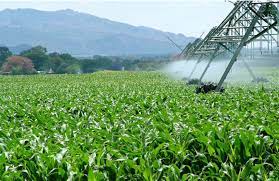Maize farming in Zambia is a pivotal force in the nation’s agricultural sector, contributing significantly to food security, economic development, and the livelihoods of millions. As one of Africa’s leading maize producers, Zambia’s commitment to sustainable and efficient maize cultivation underscores its importance on the global agricultural stage.
Historical Context:
Zambia’s agricultural roots run deep, with maize emerging as a staple crop integral to the nation’s survival. Introduced by European settlers, maize quickly adapted to Zambia’s diverse agro-ecological zones, proving itself as a resilient and versatile crop capable of thriving in various climates.
Geographical Advantage:
Zambia’s geographical diversity provides an ideal setting for maize cultivation. Fertile soils, consistent rainfall, and favorable climates across the country create optimal conditions for successful maize farming. From the expansive plains of the Zambezi Valley to the elevated plateaus of the Central Province, Zambia’s varied topography supports year-round maize production.
Key Practices in Maize Farming:
- Crop Rotation and Diversification: Zambian farmers employ sustainable practices such as crop rotation to enhance soil fertility and mitigate the risk of pests and diseases. Diversification strategies, including intercropping with legumes, contribute to sustainable agricultural systems.
- Conservation Agriculture: Recognizing the importance of sustainable farming, many Zambian farmers adopt conservation agriculture. Techniques such as minimum tillage, cover cropping, and residue management promote soil health, water conservation, and long-term sustainability.
- Improved Seed Varieties: The adoption of high-yielding and disease-resistant maize varieties has significantly boosted productivity. Through research and development initiatives, farmers gain access to improved seeds that enhance crop resilience, adaptability, and overall yield.
Government Initiatives:
The Zambian government plays a vital role in supporting maize farming through various initiatives. Subsidized input programs, extension services, and investments in agricultural research contribute to the sector’s growth, empowering farmers with the knowledge and resources essential for success.
Challenges and Solutions:
While maize farming in Zambia has seen remarkable progress, challenges persist. Erratic weather patterns, pest outbreaks, and market fluctuations can pose significant threats. Sustainable solutions include the promotion of climate-smart agriculture, the development of pest-resistant varieties, and the establishment of stable market mechanisms to ensure fair returns for farmers.
Impact on Livelihoods:
Maize farming is not just an economic activity in Zambia; it is a way of life for many communities. The sector provides employment, sustenance, and a sense of identity for countless Zambians, particularly those in rural areas. As maize farming thrives, so does the nation’s overall well-being, fostering community resilience and sustainable development.
Future Prospects:
Looking ahead, Zambia’s maize farming sector is poised for continued growth and innovation. Embracing technological advancements, investing in agribusiness, and furthering sustainable practices will contribute to the sector’s resilience and prosperity, ensuring that maize remains a cornerstone of Zambia’s agricultural landscape.
Conclusion:
Maize farming in Zambia is a dynamic and integral part of the nation’s agricultural heritage. With a commitment to sustainable practices, technological advancements, and government support, Zambia stands as a key player in global maize production.
As the country navigates the challenges of the agricultural landscape, the resilience and innovation of Zambian farmers continue to shape the future of maize farming, paving the way for a sustainable and prosperous agricultural sector in the heart of Africa.
